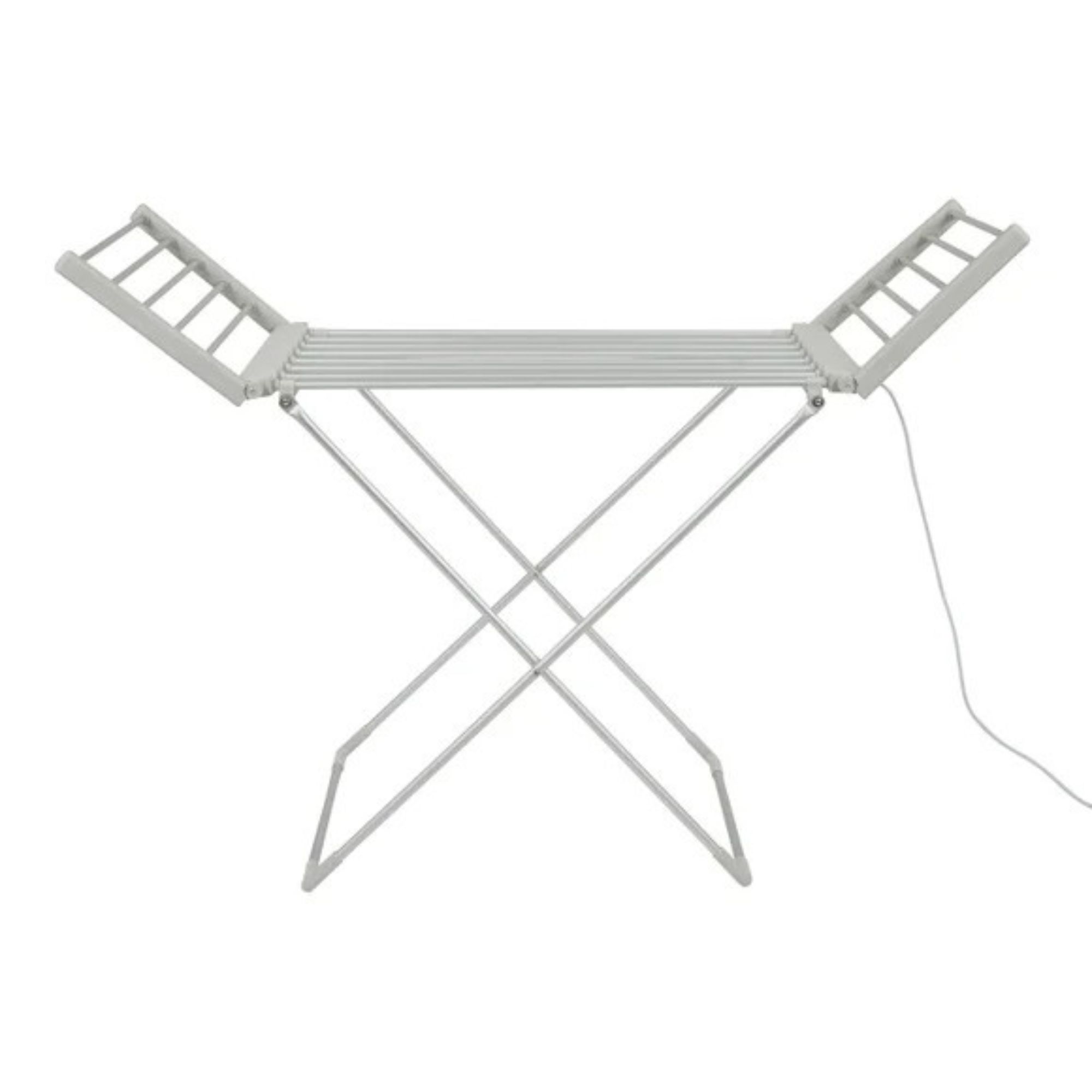8 common laundry drying mistakes to avoid this winter, warn experts
Are you guilty of making these easy errors while drying your laundry indoors? Not to worry, we're here to help


Battling the weekly wash is difficult enough, but finding somewhere to dry it all is the real challenge, especially in winter. Made all the more tricky because many of these methods should be avoided altogether.
Drying clothes indoors during winter proves tricky, especially if you are limited on space and don't have a tumble dryer. Even when you own one of the best-heated airers, there's the potential mistake of overloading it or loading it inefficiently, making drying times even longer.
With a long winter still ahead, now is the ideal time to discover common laundry drying mistakes to avoid, ensuring a season full of dry, fresh-smelling clothes, bedding and towels.
8 laundry drying mistakes to avoid this winter
In addition to making your home cosy, the colder months mean finding a way to dry your clothes fast and effectively indoors. You might think there aren't many laundry mistakes you can make in your home, but surprisingly, there are a fair few.
Whether you've run out of small laundry room ideas or have been faced with a particularly overwhelming, large load of washing without a dryer, you've probably had to get creative with your drying options.
With that in mind, we asked the experts to share any potential pitfalls and mistakes you could make when drying your clothes indoors to ensure the process is as smooth as possible.
1. Overcrowding
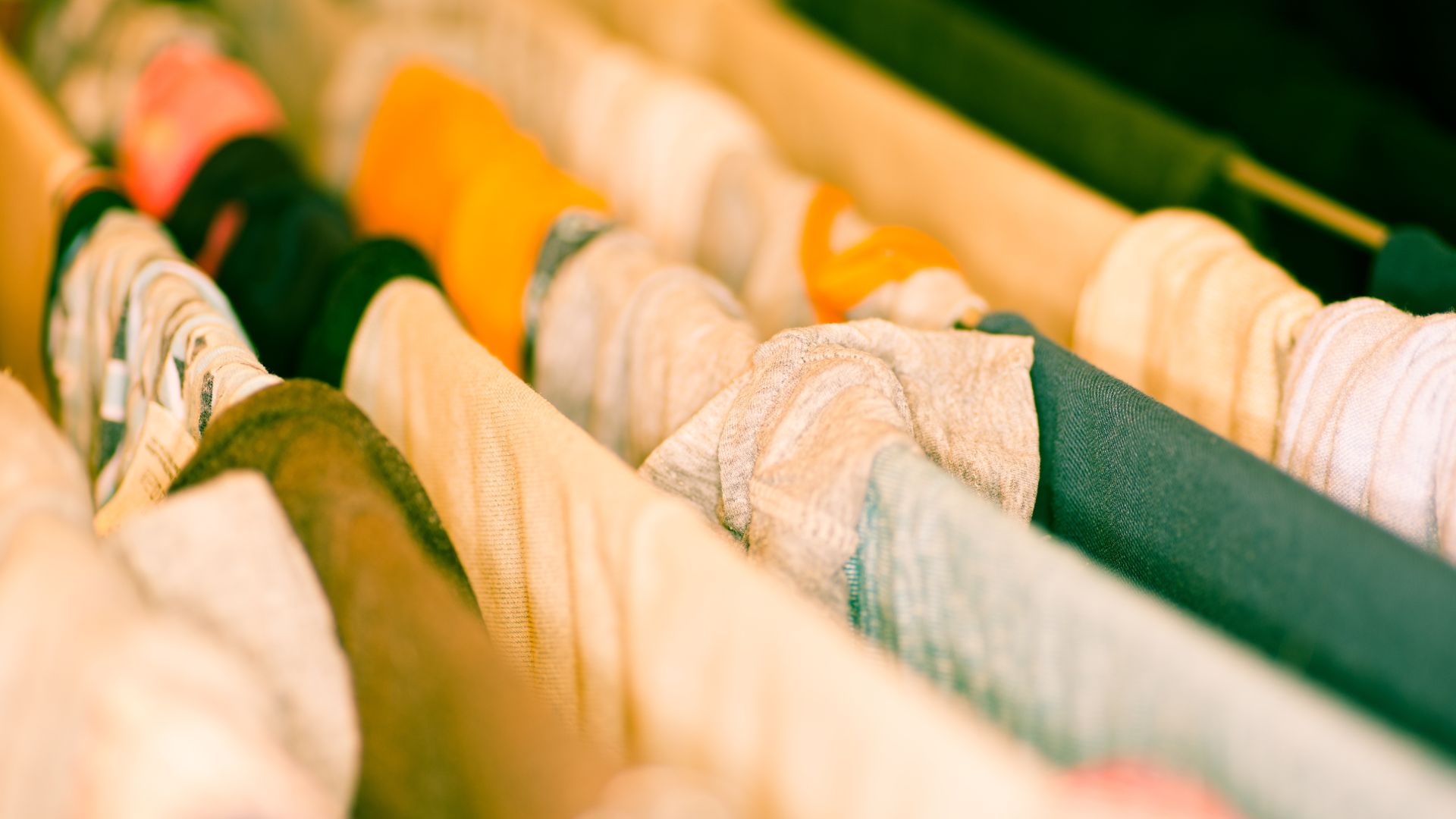
"One common mistake is overcrowding the clothes rack because airflow is everything," says Henrique Conceicao, area manager at Total Clean. "If clothes are packed too closely, the air can’t circulate properly. I learned early on, while preparing venues, how important it is to space things out for the best result."
Sign up to our free daily email for the latest royal and entertainment news, interesting opinion, expert advice on styling and beauty trends, and no-nonsense guides to the health and wellness questions you want answered.
This isn't considered a laundry mistake that makes your home untidy, but it will mean your clothes take forever to dry. You might pride yourself on never doing this but when you're in a rush throwing clothes on an airer or radiator without organising them is a big no-no.
"This is the 'clothes mountain' approach, where everything gets piled together in a jumbled mess, your clothes need to breathe just like you do, so if possible, get yourself a dedicated rack and try to position it in a warm area of the home, ensuring the clothes are evenly spaced out," Catherine Green, cleaning expert at Smol.

Having worked for the cleaning brand Smol since its creation, Catherine has tested each and every product before its release. She is also involved with the production team's process and provides feedback for the development of the company's products.
2. Not using a heated airer
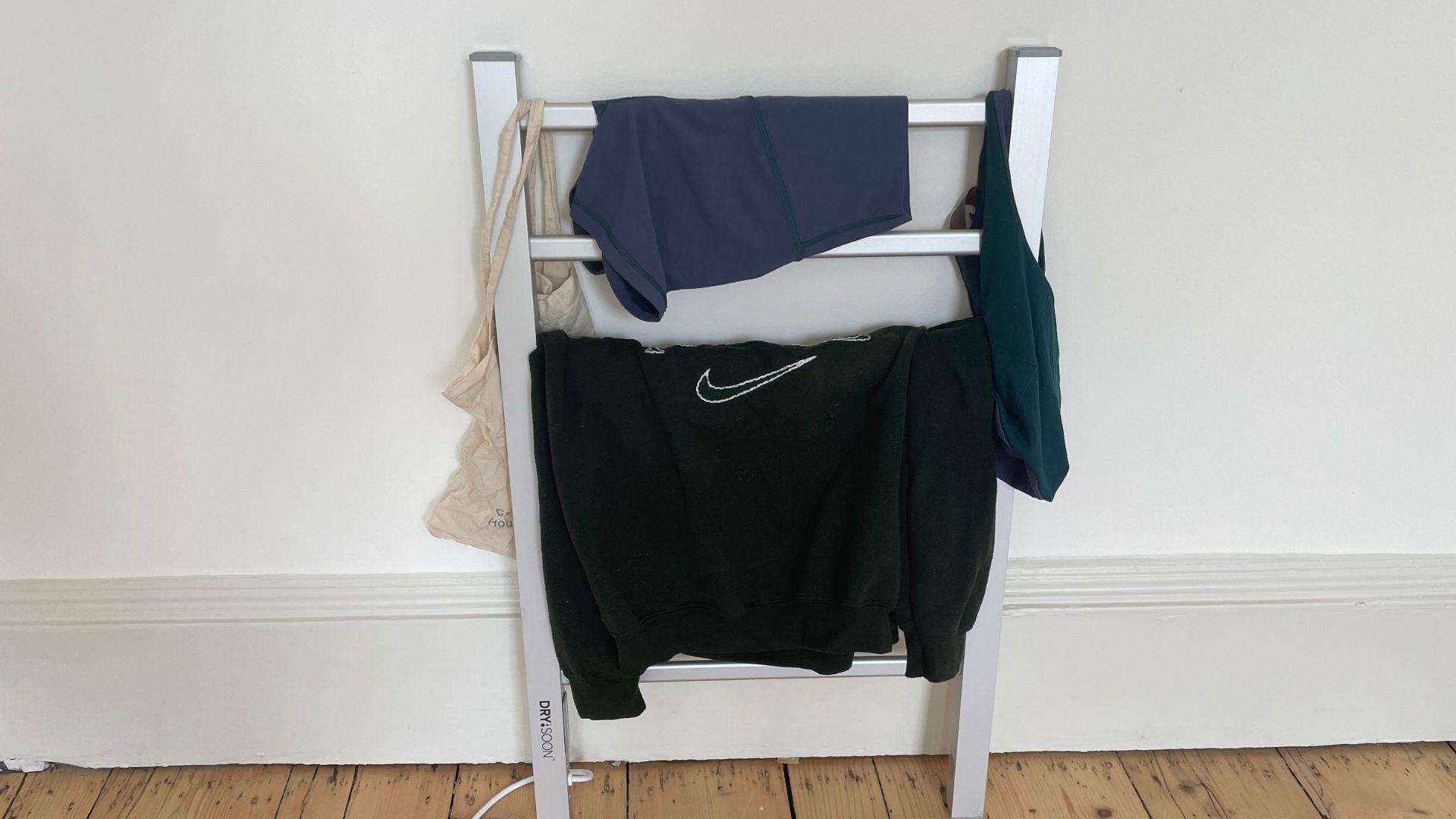
Perhaps because of caution around how much it costs to run a heated airer, many will forgo using one to dry clothes in winter but this could be considered a mistake.
Despite energy prices soaring it remains highly affordable to run a heated clothes airer to start the drying process. Not having a heated airer to help on really cold days can result in a fresh load of laundry smelling damp because it takes too long to dry properly.
From testing heated clothes airer we can confirm these laundry devices are pretty straightforward drying aids to use but there are some mistakes to be made when loading, in the same way as a traditional clothes airer (as mentioned above).
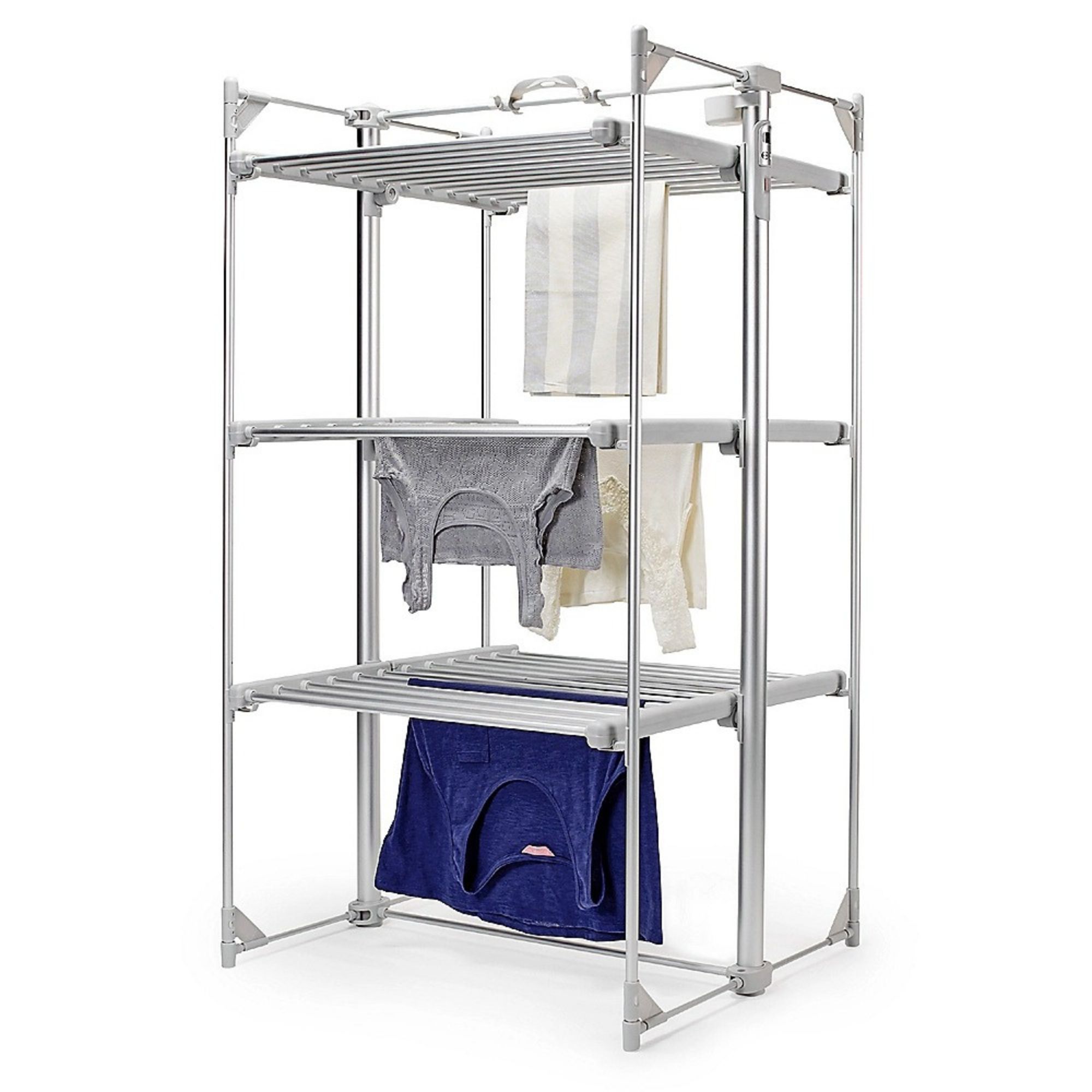
The tall tower takes up minimal floor space and it can still dry 15kgs of laundry. Our Home Eccomerce Editor rated it the best overall. It's expensive, but if you want to save a little, check out our Lakeland voucher codes.
3. Doing large laundry loads
It can be very tempting to get all your washing done as quickly as possible, especially when you've got a whole house to deep clean on top of the laundry. But overloading your washer can have a knock-on effect on your clothes.
"You may be trying to get as much laundry done as possible or reduce the number of times you run your washing machine, but overloading the appliance with too many items can actually result in them being damper and more creased," explains Polya Petrova, an appliance and cleaning professional at Fantastic Services.
"This won’t only make the drying time longer, but you’ll also need to do more ironing afterwards," she adds.
4. Hanging laundry over bannisters and doors
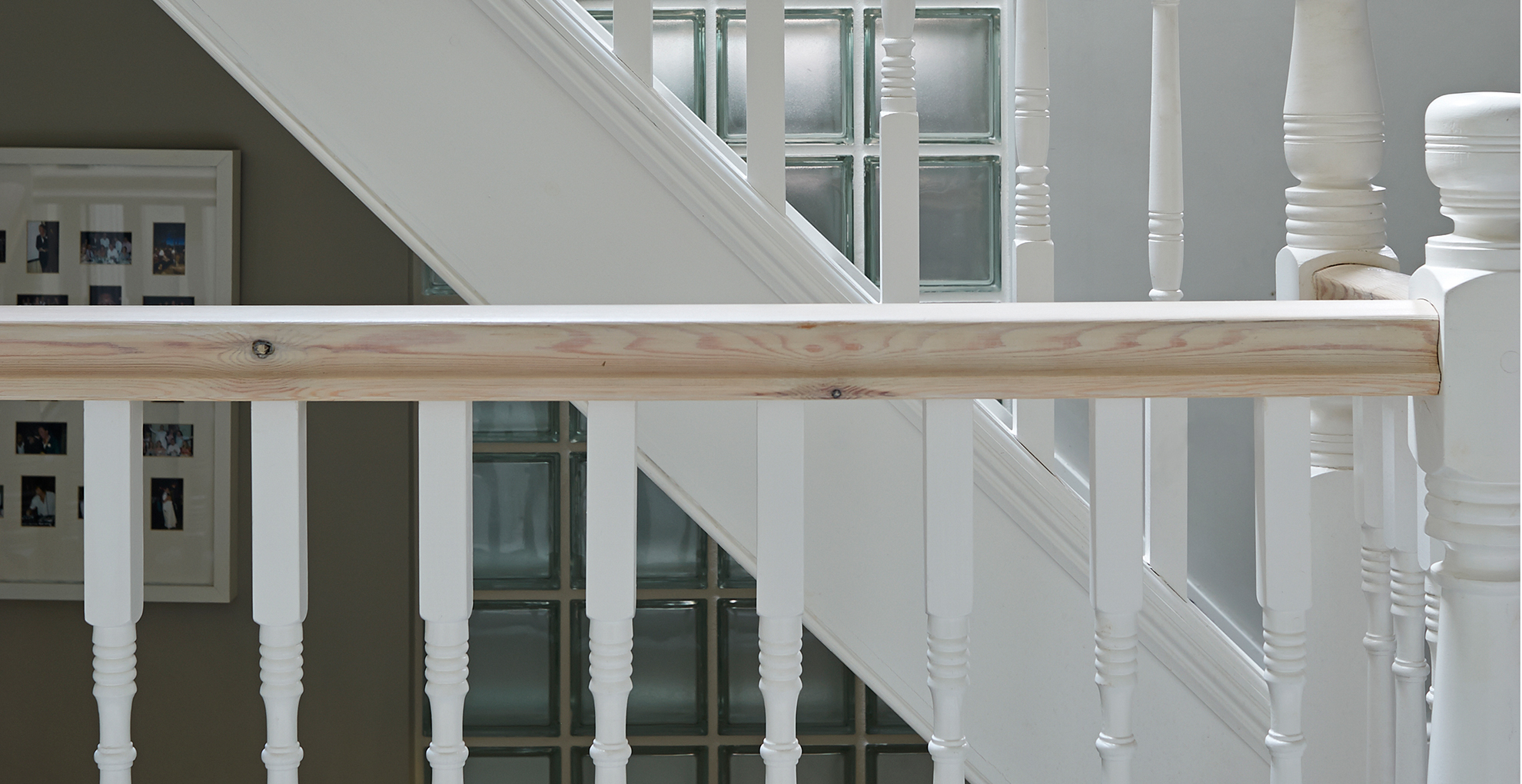
Aside from filling a room with airers, most homeowners won't have the space indoors to be able to hang their washing to dry effectively. And that's where common laundry drying mistakes arise because we resort to using doors and bannisters.
"Whilst doors and bannisters may seem like a practical, cost-effective solution to drying bedding and laundry, this could be causing detrimental damage to your property," warns Paul Strong, the store operations Manager at Magnet Trade.
Whilst your wooden bannisters may seem like the perfect additional airer, using them for such a task can cause your home more damage than it's worth.
"Placing wet washing onto wooden surfaces could lead to long-term structural damage. Wood is an extremely porous material so when wet laundry is left on it, especially repeatedly, the wood can warp and even rot over time," explains Paul.
It's not just wood rot that can come from drying your clothes in these places, there's also the issue of mould growth over time. Paul says that wet wood is a breeding ground for mould growth as moisture can get trapped between the wet fabric and the wood surface. Your bannister just became one of the unexpected places you can find mould in your home.
5. Using radiators
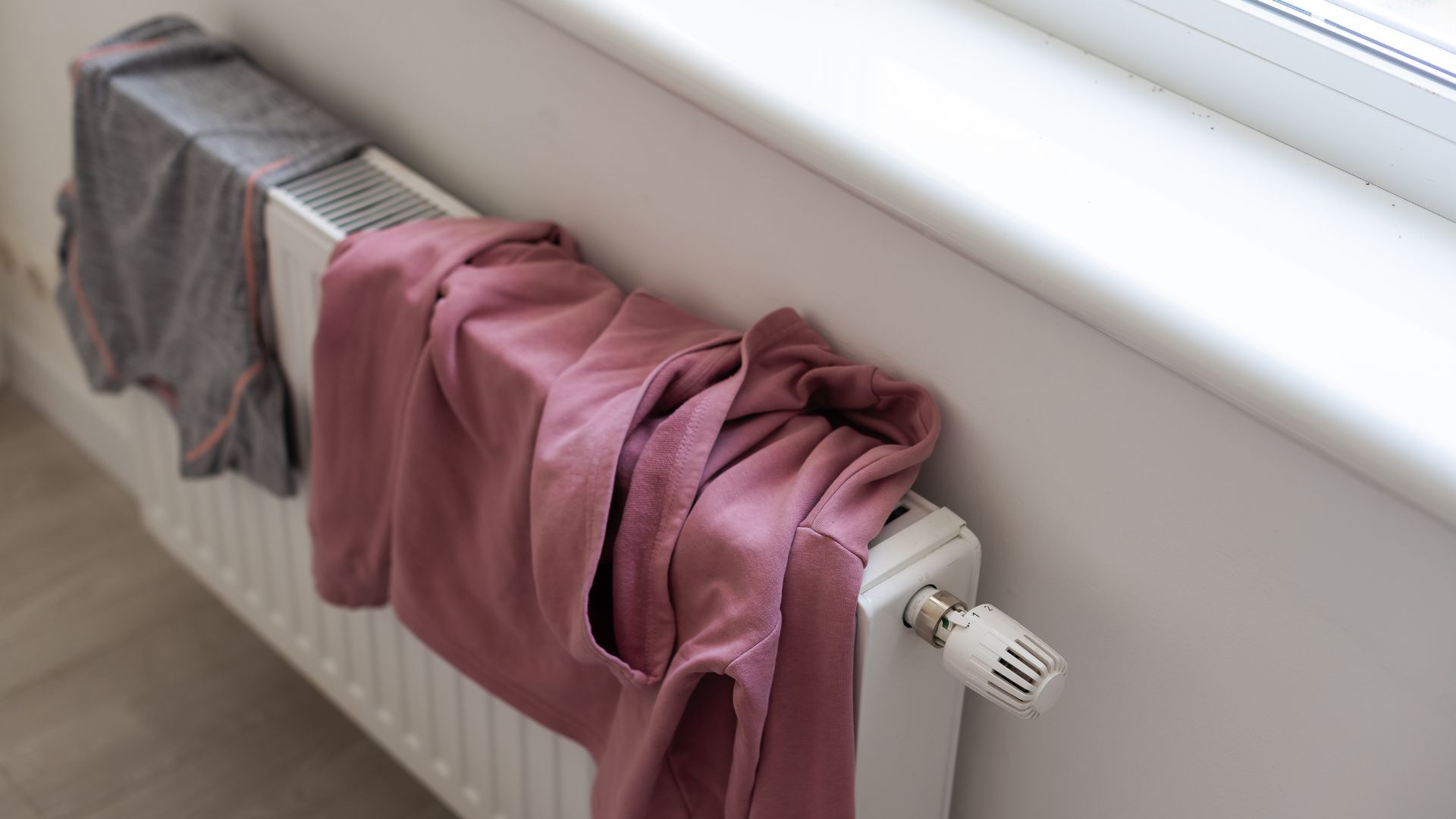
"On the topic of mould, drying laundry on radiators should also be avoided," says Paul. "Drying clothes on your radiators will trap moisture against your walls, promoting mould growth."
Cramming your clothes onto a radiator or layering them on top of one another will also make your clothes smell damp as it slows down their drying process.
Not filling radiators with wet clothes is also an expert tip for saving energy around the home because it is an inefficient use of heating.
6. Not using a dehumidifier
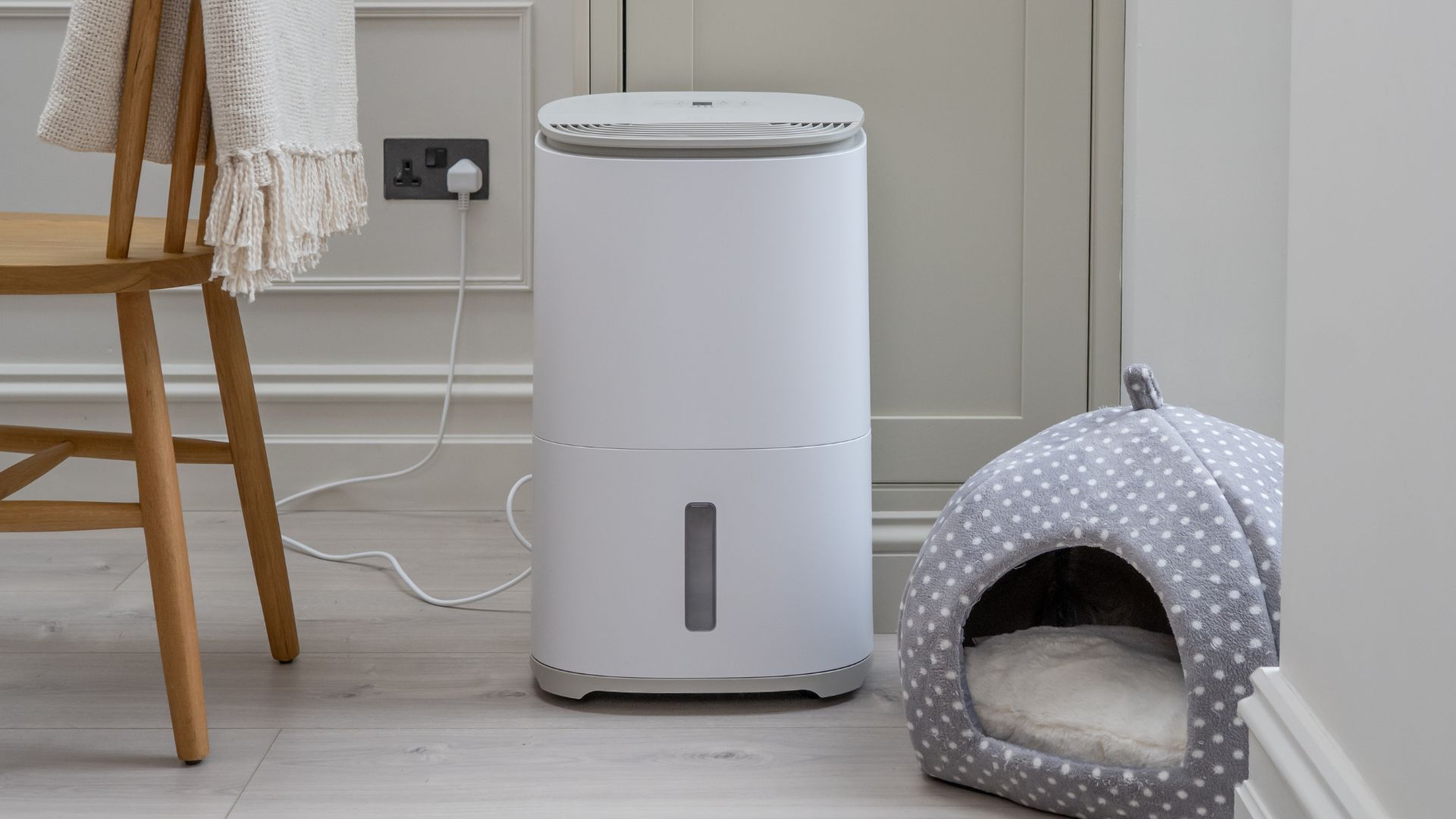
Dehumidifiers are good for drying clothes, which is one of the many benefits of using a dehumidifier in winter.
We couldn't recommend anything else more than buying one of the best dehumidifiers to help you dry clothes. Whilst there are some fab dehumidifiers for your bathroom and other rooms specifically, they're great at helping dry your laundry without hiking up your energy bills.
Gwilym Snook, heated laundry expert at ao.com, recommends this as the best way to dry your clothes.
"The best method to dry your clothes indoors is to place your fabrics on a drying rack and pop your dehumidifier on. Since your dehumidifier pulls moisture from the air and prevents this from setting in the room, this will make drying your clothes far easier, particularly helpful in the colder months," says Gwilym.
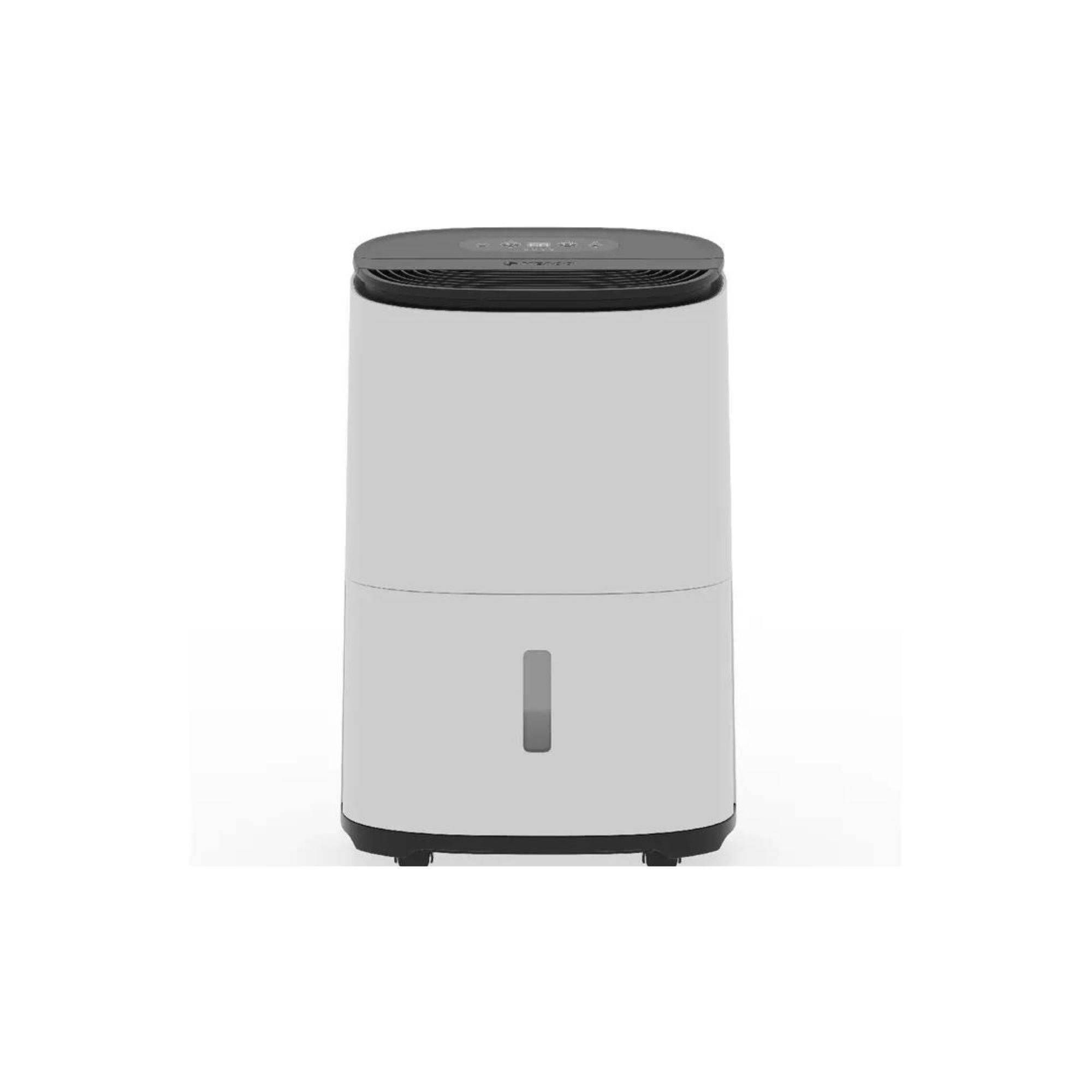
This is at the top of our buying guide for dehumidifiers for a plethora of reasons. It's beginner-friendly, easy to use, and super powerful. You can use it in any (and every) room of your house. Read our full MeacoDry Arete One review for more details.
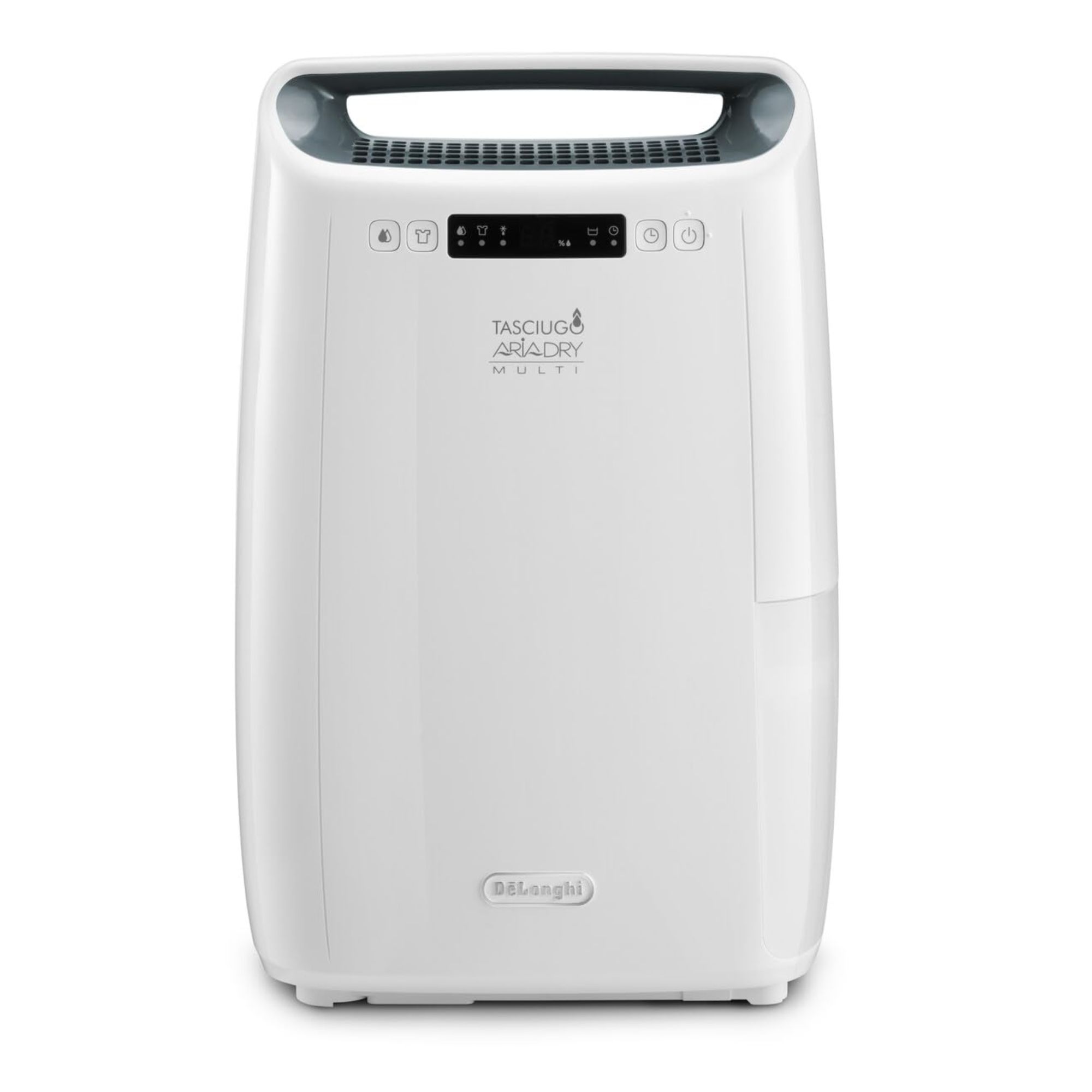
Lots of dehumidifiers can be noisy, so finding one that's quiet enough to let you sleep can be tough. Not only is the De'Longhi beautiful, but it's whisper-quiet too.
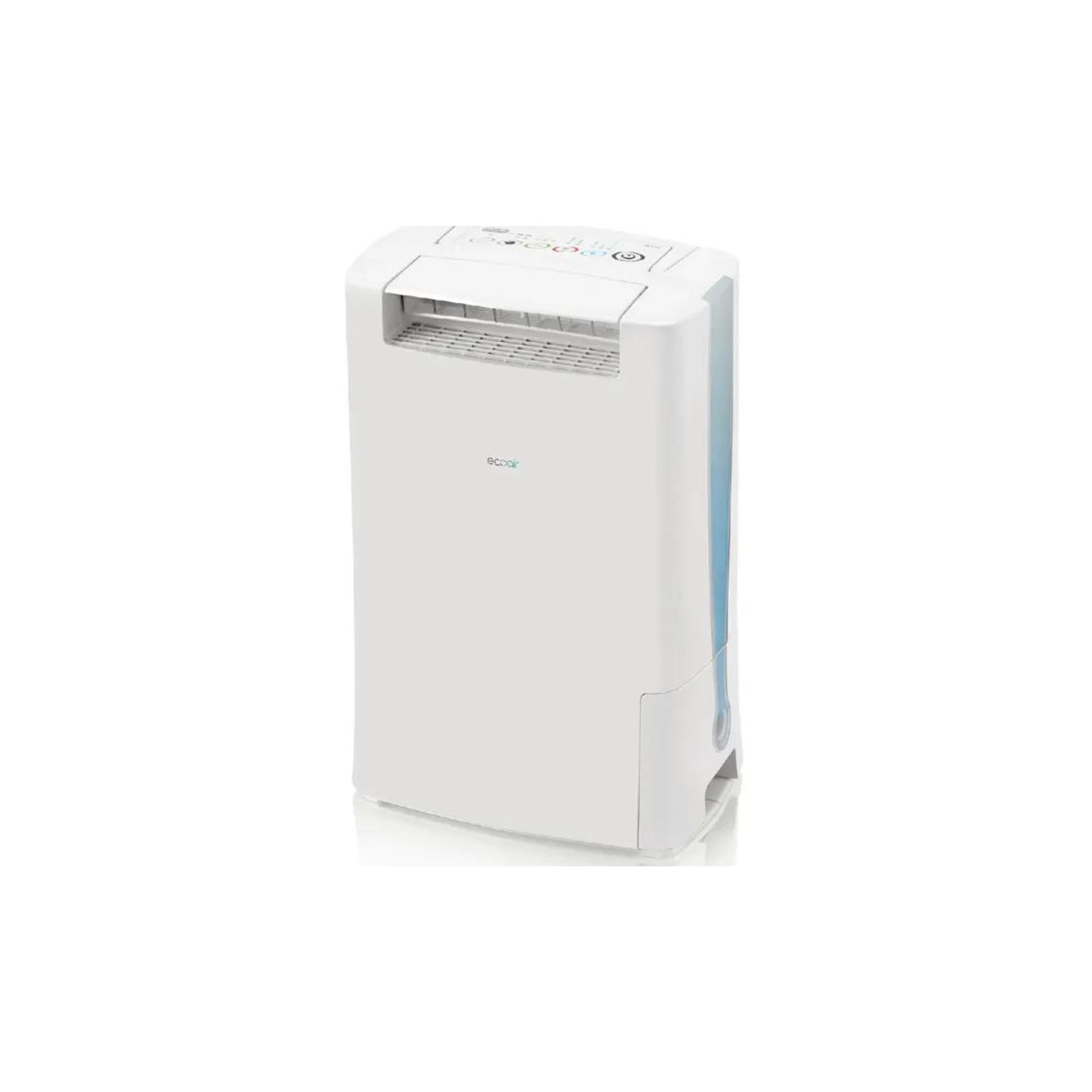
The best dehumidifiers are the ones that can help with household tasks, too. This is a superhero when it comes to drying clothes, so if you want a dehumidifier for your laundry room, look here.
7. Using hot air, rather than cool
When drying clothes indoors during winter, you would automatically assume hot air would be more beneficial, right? Wrong, according to market-leading dehumidifier brand Meaco, which has shared new research from a series of controlled tests looking to speed up the process of drying laundry indoors.
After testing a wide range of methods, the brand has developed a surprisingly simple formula that reduces drying time from 20 hours to just 2, using a cooling fan.
The brand’s founder, Chris Michael, told us," Our aim with these tests was simple: show how airflow and humidity really behave in a normal home so households can make decisions that save both time and money.”
After repeated experiments, Chris and the team settled on a standout combination: pairing an energy-efficient dehumidifier with a cooling fan. Together, the two appliances simulate the conditions of an outdoor washing-line environment: warm, dry air with good airflow.
8. Placing your clothes in direct sunlight
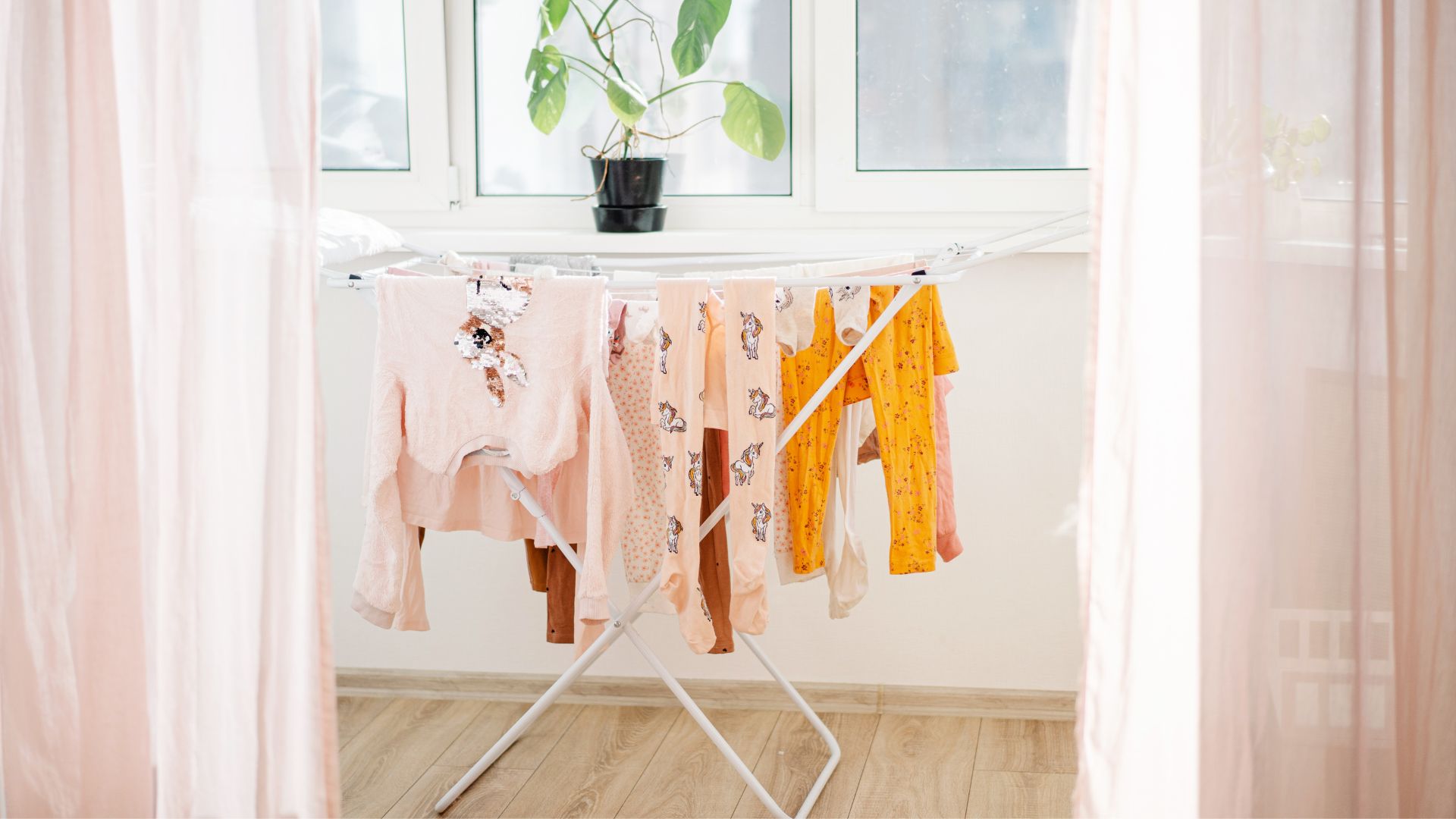
In the same way, your houseplants can get sunburnt when left in direct sunlight, your clothes can also be damaged from it.
"While sunlight can help with natural disinfection and stain removal, it may also cause fading or damage to more delicate fabrics. Instead, hang them in a shaded area of your home that’s still warm or use a fabric-friendly, UV-blocking cover," advises Polya.
Even opting for a warm room that doesn't have direct sunlight in it will dry your clothes much quicker and without the risk of damage.
Should you be hesitant to buy a dehumidifier even after reading the expert's opinion, they're not just useful in winter. Actually, there are several reasons you should buy a dehumidifier in summer too, so you really will get your money out of the appliance.
Now you can dry your clothes indoors with ease why not try out some laundry room organisation ideas and get your space ready to tackle winter laundry with ease?

Emily joined woman&home as a staff writer after finishing her MA in Magazine Journalism from City University in 2023. After writing various health and news content, she now specialises in lifestyle, covering unique cleaning hacks, gardening how-tos, and everything to help your houseplants thrive.
You must confirm your public display name before commenting
Please logout and then login again, you will then be prompted to enter your display name.
